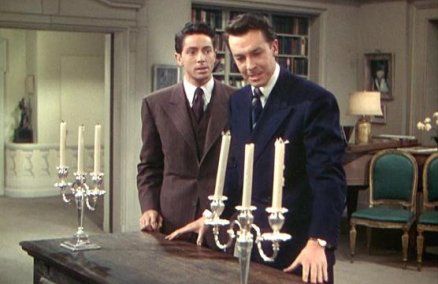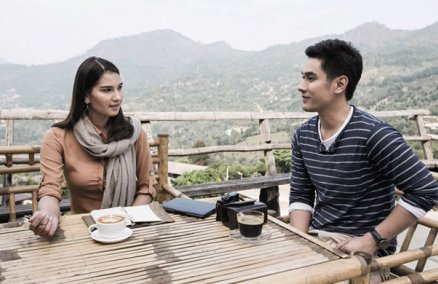You have been working with Mom Noi and Ploy so many times now.
This is the sixth time I’ve worked with Mom Noi and the fourth or fifth time with Ploy. Working with them is like being with family. Ploy and I had acting classes with Mom Noi when we were young, and we used to take part in the same movies. I was the first teenage actor for Mom Noi, so I was like a son on whom he placed great responsibility. There is a bit of pressure to produce work that will please him. But it’s an advantage working with people I know so well, as we already understand each other well. Some things just feel automatic.
Why did you get involved?
A while back, ML Kukrit Pramoj wrote the story based on a Broadway adaptation of [Akira Kurosawa’s] Rashomon. Ten years ago, Mom Noi wanted to make the film, but couldn’t because of the recession. But when Eternity became so successful, Sahamongkol wanted Mom Noi to make another period piece. I had wanted to be part of the film back then, too, so I’m happy I get to be involved in it now.
What are the challenges with period films?
The costumes are a struggle, plus getting a feel for the different dialect used in the past. As for acting, it’s all the same—acting is a science. I don’t have to research as this is the job of the production and costume team, and they just tell me what I need to know to build my character.
Why make period films?
Thai movies today don’t have much variety. Investing in a unique movie like this is a risk for investors. I was happy that Sahamongkol took this opportunity to create something that wasn’t just populist or trendy. They are responsible for developing the content in the film, and this is praiseworthy.
What is the difference between U Mong Pa Muang and Eternity?
These two films may be similar to each other: both period films, same actors and the same director. But Umong Pa Muang is different because the main characters don’t necessarily run the story. It’s the same story told in four different ways. The actors have to depict the same scene over and over with variations.
Any other films this year?
I’m involved in two other films that have just wrapped. One is an indie film called Hi-So, which is now touring film festivals abroad. The second is Shambala, which was shot in Tibet and tells the story of two brothers traveling together.
Advertisement















